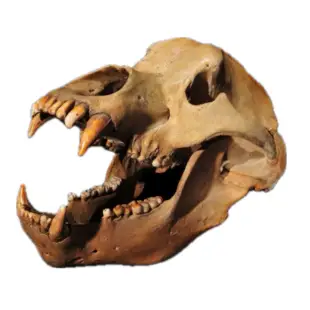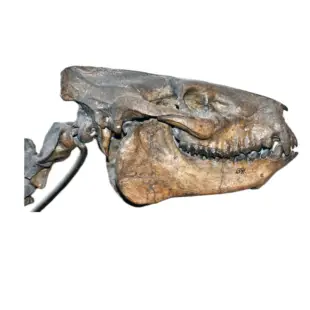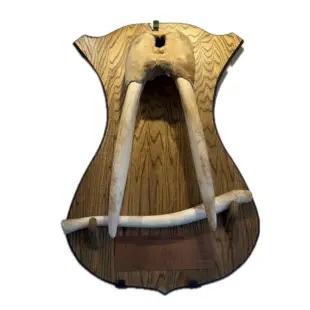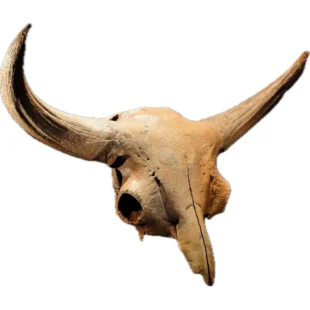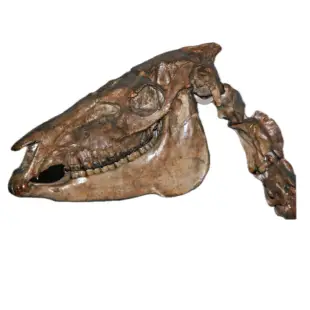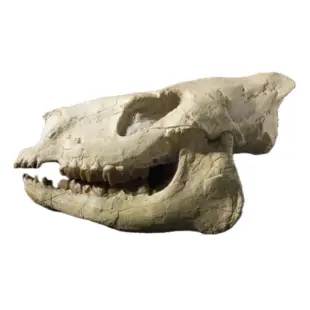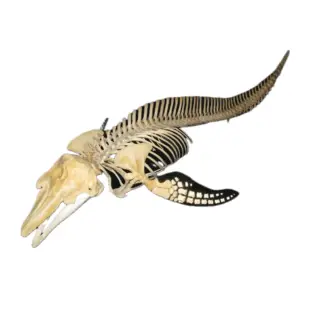Rare and Exceptional Mammal Fossils
Fossil mammals are the preserved remains or traces of mammals from past geological ages, providing critical insights into the evolution, diversity, and adaptation of this vertebrate group. Mammals first appeared during the Late Triassic period, over 200 million years ago, and they have since evolved into a wide range of forms, from small shrew-like creatures to massive whales. Fossil evidence helps paleontologists understand how mammals developed unique characteristics such as endothermy (warm-bloodedness), hair, and specialized teeth.
One of the most significant contributions of mammalian fossils is their role in illustrating evolutionary transitions. Early mammals evolved from synapsid ancestors, often called “mammal-like reptiles,” which dominated terrestrial ecosystems before the age of dinosaurs. Fossils from genera such as Morganucodon show transitional features, including a differentiated tooth structure and the beginnings of a more complex jaw and ear anatomy. These transitional forms help scientists trace the lineage from reptile-like creatures to true mammals.
Throughout the Mesozoic era, most mammals were small and nocturnal, overshadowed by the dominance of dinosaurs. However, their fossils still show a steady diversification in form and function, suggesting a quiet but important evolutionary experimentation. With the extinction of non-avian dinosaurs around 66 million years ago, mammals rapidly diversified and filled ecological niches across the globe. The fossil record from the Paleocene and Eocene epochs shows a dramatic increase in mammalian size and variety.
Different types of fossil evidence—bones, teeth, and even soft tissues or footprints—reveal valuable information about mammalian lifestyles. Teeth are especially important because they are often well-preserved and can indicate diet and evolutionary relationships. Skull structure and limb bones can inform scientists about sensory capabilities, locomotion, and social behavior. Exceptional fossil sites, like the Messel Pit in Germany and the La Brea Tar Pits in California, have yielded remarkably detailed specimens, including fur impressions and stomach contents.
Fossil mammals continue to be central to understanding biological evolution and past ecosystems. They allow researchers to reconstruct ancient environments and track how mammalian groups responded to climate changes, mass extinctions, and continental drift. As new fossils are uncovered and technologies like CT scanning and molecular analysis advance, our knowledge of mammalian history continues to grow, offering deeper insights into how modern mammals, including humans, came to be. Would you like to learn about a specific group, like early primates or Ice Age megafauna?
10 fun facts about fossil mammals:
-
Some mammals lived alongside dinosaurs – Early mammals like Morganucodon and Hadrocodium were already around during the age of dinosaurs, though they were small, nocturnal insect-eaters trying to avoid being dinner themselves.
-
The largest known land mammal was Paraceratherium – This extinct, hornless relative of the rhinoceros stood over 16 feet tall at the shoulder and weighed around 20 tons, making it larger than most dinosaurs.
-
Saber-toothed cats weren’t just one species – While Smilodon is the most famous, there were many species of saber-toothed predators worldwide, each with different tooth shapes and hunting styles.
-
Fossilized mammal poop (coprolites) exists – Paleontologists have found fossilized dung from Ice Age mammals that helps them understand ancient diets and ecosystems.
-
Whales evolved from land mammals – Fossils show that modern whales descended from hoofed, dog-sized land animals like Pakicetus, which lived near water and gradually adapted to fully aquatic life.
-
Some prehistoric mammals were covered in armor – The Glyptodon, a giant relative of the armadillo, had a dome-shaped shell like a turtle and could weigh as much as a small car.
-
Mammoth tusks record growth like tree rings – Scientists can study cross-sections of tusks to learn about the animal’s age, diet, and even environmental changes during its life.
-
The fossil of a pregnant Maiacetus was discovered – This early whale fossil included a fetus in the birth position, giving rare insight into reproduction in ancient marine mammals.
-
Ancient sloths were huge – Ground sloths like Megatherium could reach the size of modern elephants and used their massive claws for defense and digging.
-
Fossil teeth are like time capsules – Because mammal teeth are so durable and unique, paleontologists can often identify a species from just a single tooth, and even tell what it ate.
Prehistoric 101 (Learn about fossils, minerals, and meteorites)
Fossil Mammals for sale
Ammonites: The Spirals of Time
Prehistoriclearn.com


